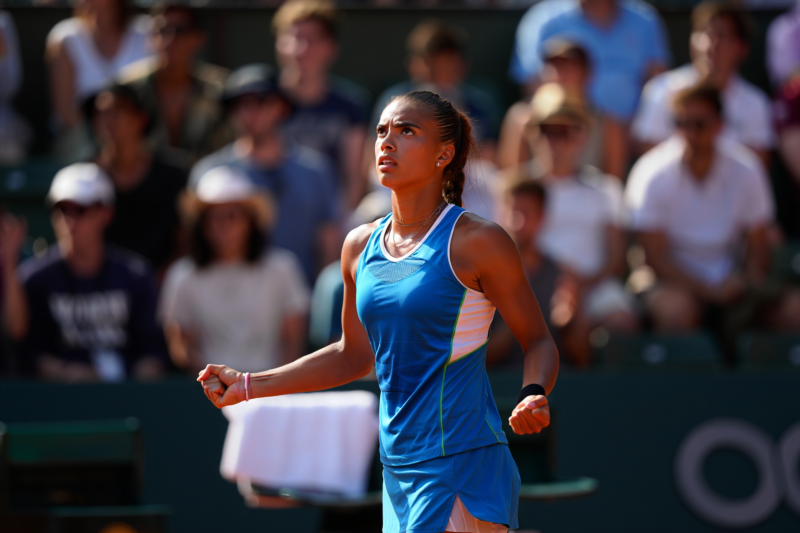
Psychology Behind TieBreak Performance Boosts Clutch Success Strategies
In the high-intensity world of sports and competitive games, tie-break scenarios are defining moments that separate good players from great ones. These pivotal instances demand not only physical skill but also mental resilience and sharp focus. Understanding the psychology behind tie-break performance reveals essential strategies to elevate clutch play, ensuring athletes and players can maintain composure, make confident decisions, and ultimately, secure victory when it matters most.
This article delves into the psychological factors influencing tie-break performance and provides actionable mental strategies designed to improve success rates during crucial moments. Whether you’re an athlete aiming to refine your mental game or a coach seeking to empower your team, mastering these psychological insights can transform pressure into opportunity.
The Psychology of Clutch Performance in Tie-Breaks
The Stress-Performance Relationship
The core principle influencing clutch performance under pressure is the Yerkes-Dodson Law, which posits that moderate levels of stress can enhance performance, but excessive anxiety impairs it. During a tie-break, players often experience heightened arousal, which, if not managed, leads to tense muscles, racing thoughts, and decision errors.
Cognitive Distractors and Pressure Anxiety
High-pressure moments trigger cognitive load, where the brain is overwhelmed with distractions such as fear of failure, negative self-talk, or concern about the audience. These factors interfere with skill execution, highlighting the importance of mental strategies that promote focus and calm.
Confidence and Self-Efficacy
A critical psychological factor is self-efficacy—the belief in one’s ability to succeed. Successful clutch performers exhibit high confidence levels, which bolster their resilience against pressure-induced doubts. Cultivating self-belief can create a mental fortress that withstands the stress of tie-breaks.
Proven Mental Strategies to Enhance Tie-Break Performance
1. Visualization Techniques
Visualization involves mentally rehearsing successful outcomes, creating a vivid mental image of executing perfect serves, shots, or moves under pressure.
- How to practice:
- Close your eyes and imagine the entire tie-break scenario.
- Visualize each step—your stance, grip, precise movements—leading to success.
- Reinforce positive feelings associated with these images.
*Impact:* Simulation of success builds neural pathways aligned with confident performance, reducing anxiety and increasing readiness.
2. Controlled Breathing and Mindfulness
Deep, diaphragmatic breathing helps regulate arousal levels, calming the nervous system.
- Technique:
- Inhale slowly through the nose for a count of four.
- Hold for a count of four.
- Exhale slowly through the mouth for a count of six.
- Repeat until a sense of calm is achieved.
Incorporate mindfulness routines to stay present, avoiding catastrophic future thinking or dwelling on past mistakes.
*Impact:* Enhanced focus and emotional regulation permit clearer decision-making during high-pressure moments.
3. Anchoring Positive Self-Talk
Your internal dialogue influences your emotional state and confidence.
- Examples:
- “I’ve trained for this.”
- “Focus on my game plan.”
- “I am capable of delivering under pressure.”
Use affirmations and reinforce a growth mindset to prevent negative spirals and maintain resilience.
*Impact:* Building mental resilience ensures that setbacks do not derail performance.
4. Pre-Performance Routines
Standardized routines evoke a sense of control and familiarity.
- Components:
- Specific warm-up sequences
- Ritualistic gestures
- Pre-serve or pre-shot visual cues
Routines effectively cue the brain into a performance mode, reducing uncertainty and stress.
*Impact:* Developing a consistent routine increases confidence and minimizes performance variability.
Implementing Mental Strategies: Building a Clutch Mindset
Practice Under Simulated Pressure
Replicate tie-break scenarios during training to habituate the mind to high-stakes situations. This reduces the novelty and fear associated with real pressure.
Develop Psychological Resilience
Read books on sports psychology, engage in mental training exercises, and consider working with a sports psychologist to reinforce mental toughness.
Monitor and Adjust
Track your performance, emotional responses, and mental state. Identify what strategies work best and refine your mental toolkit over time.
FAQs: Addressing Common Questions
How long does it take to improve tie-break performance through mental strategies?
Results vary, but consistent practice over several weeks can lead to measurable improvements in focus, confidence, and stress management.
Can mental training compensate for physical skill deficits?
While mental strategies significantly enhance clutch performance, they should complement, not replace, physical training. A balanced approach yields the best results.
Is visualization effective for all types of players?
Yes, visualization benefits athletes at all skill levels by enhancing mental clarity, focus, and confidence.
The psychology behind tie-break performance underscores that mental strength is as vital as technical skill in clutch moments. By harnessing proven mental strategies such as visualization, controlled breathing, positive self-talk, and routine development, players can transform anxiety into a competitive advantage.
Start integrating these psychological insights into your training today. Cultivate a resilient, focused, and confident mindset—your winning streaks depend on it. Remember, in the game of high-pressure performance, your mind is your most powerful weapon.
Take Action Now: Implement one mental strategy each week, track your progress, and observe how your clutch performance elevates. Success in high-stakes moments begins with mastering your mind—start today.


